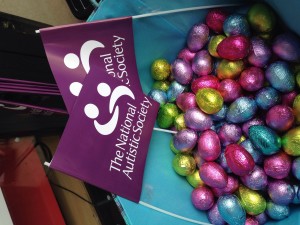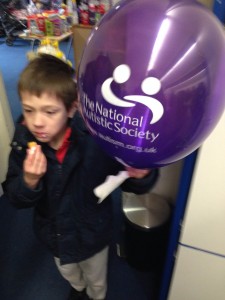Today was spent at my son’s school supporting their work raising money for National Autistic Society.
As my regular readers will know my son (age eight and on the autism spectrum) attends what is referred to as a ResourceBase – a specialist autism unit within the mainstream school. You can find out more about this halfway house solution to autism education at a previous blog post by clicking here.
Support autism related causes is pretty standard for a school which supports children on the spectrum. But I have to say I was very impressed with what I saw today.
Tracey and Lidia who run the unit organised a cake decorating stall at today’s
Eater fair. As well they were selling cupcakes in the colours of the National Autistic Society.
Given it was a Saturday and given how hard they work during the week I’d like to play tribute to both of them and their team of support workers for doing such a great job. And for helping promote World Autism Awareness Day.
As you can see I have share day few photos of the day.
John explained to us on the train home that he had enjoyed the event but liked the ice cream and the animal petting area the best.
If you have a few coppers to spare why not make a donation to the National Autistic Society. You can find a link to their site by clicking here.
Alternatively if you have another autism related charity you think is worth supporting please feel free to share a link the comments section below.






